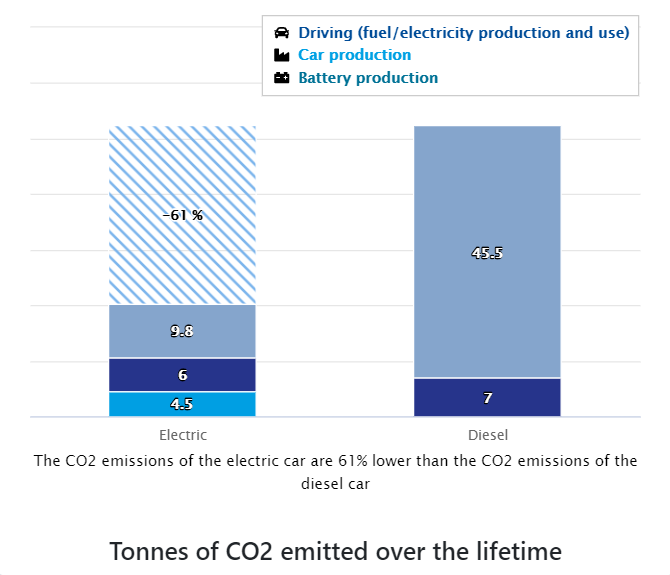The University of Eindhoven in the Netherlands has debunked claims that whitewash the environmental benefits of electric vehicles. The conclusion of their research is that after the first one or two years, electric vehicles have subsidized the battery, and produce dramatically less green house gases than diesel or gasoline engines during the entire lifetime of vehicles.
The mission of the study in Eindhoven University was to assess the lifetime emissions of green house gases of an electric vehicle, and compare it to the similar diesel or gasoline-engine car. The conclusion was that after the first 11,000 – 30,000 km (depending on the vehicle type), electric vehicles have paid back the battery, and the rest of the lifetime of the car, it emits 54%-82% less pollution than a traditional car. The calculations comprise the production of energy as well.
When the lifetime emissions of the Toyota Prius and Volkswagen eGolf were compared, the result was that after 28,000 km, the battery in the electric car has paid back its manufacturing impact on the environment, and from there on it emits 54% less gases than petrol engine. Tesla Model 3 emits 65% less greenhouses after 30,000 km when compared to the Mercedes C220.

The researchers of the university took a long look at earlier studies written about electric vehicles, and discovered six themes that continuously appeared in papers that downplayed the impact of electric cars on environment. They are:
- Many studies exaggerate the emissions of greenhouse gases in battery production.
- Battery lifetime is often underestimated.
- Developments in clean energy production during the lifetime of a car are not factored in to estimations.
- Laboratory tests conducted by traditional car manufacturers were used.
- Emissions caused by diesel and gasoline fuel production not always included.
- Ignoring the impact of the entire energy production chain (power for electric vehicles can be produced cleanly, but diesel or gasoline can’t be produced from, for instance, solar power).
The study makes assumptions about the lifetime of an average car, and the lifetime of a battery. They are thoroughly explained in the paper. For instance, based on fresh data researchers assume 250,000 km as a lifetime for a modern car. Download and read the document here (PDF).
In the history of transportation industry, major changes have taken place before. Here is one of them about hundred years ago:
“Horse drawn carriages and the unsolvable manure problem
By the end of the 19th century, large cities where “drowning in horse manure” due to horse drawn cabs, carts, buses and drays. Each horse produced about 15 kilograms of manure per day. In 1894, The Times predicted that “In 50 years, every street in London will be buried under 9 feet (2,75 meters) of manure”.
Later this became known as the “Great Horse Manure Crisis of 1894″. Apart from the filth and stench this caused, it also attracted flies that spread typhoid fever and other diseases. In 1898, the world’s first international planning conference convened in New York. It was abandoned after 3 out of the planned 10 days because none of the delegates could see a solution to the growing manure crisis.”
In the early 20th century, however, internal combustion engine caused a disruption in transportation industry that rapidly replaced horses with cars. Pollution problem was solved (for awhile).

